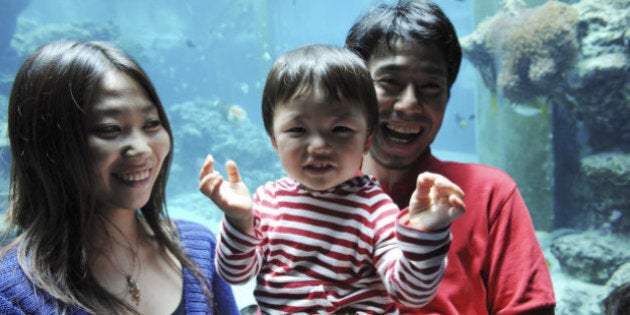
My son runs towards me at full-speed and dives into my arms. He buries his head and tucks it in for a full-fledged snuggle. Then he pulls away, looks into my face and says, "Wait -- do you want to be hugged?"
"Yes," I say, and he tumbles back in. He is almost eight.
"Do you want to be hugged?" This question isn't complicated but it carries a lot of meaning in its six little words.
Now, more than any time I can remember, issues of sexual violence, harassment and rape culture are all around us. Plenty of smart people have challenged the view that women and girls need to watch what they wear, watch what they say or watch what they do in order to keep themselves safe. It's not about what she wore, whether she flirted, or whether or not her drink was left uncovered. Instead, the focus is shifting, and rightly so, to the behaviour of our boys.
Boys and men have to learn that they are not entitled to anyone else's body. All interactions need real, genuine, enthusiastic consent. So how do I teach that to my small son? A serious talk seems hard to initiate -- would I first have to explain all the forms of sexual assault to him in order to tell him not to commit them?
The first lesson happened a bit by accident. He came home from school and told me about a boy who got into trouble for kissing other kids. My son was working hard to figure this out because, while kissing is nice, getting in trouble is not.
I told him that people can only kiss each other when they both want to. You can't kiss someone who doesn't want to be kissed. That's a really important rule about kissing. And the same goes for hugging. You can only hug people who want to be hugged, I said.
I wasn't intentionally drilling home a lesson about consent; I was just helping him understand why some other kid had had to go to the Vice Principal's office that day. But what happened is that he started asking -- every time -- if the people he wanted to hug wanted to be hugged.
When it comes to whether or not I want to be hugged by my kid, the answer is almost always yes. But it's still nice to be asked. And sometimes the answer is no. When it's the twentieth hug after turning off the lights and saying goodnight -- no. When I'm trying to make dinner and listen to the other one tell me about her math test and he tells me he's hungry and I open his lunch box to find its contents uneaten and then I glance over to see seven unanswered emails from my client -- no, I don't want to be hugged just then.
He knows we get a kick out of his asking but still, he has learned to ask. And he has learned that the answer is true. If it's a "yes," there's a hug. If it's a "no" (or a "not now" or a "maybe later"), there isn't. It's the answer he gets -- and not his own intention or preference -- that determines what happens next. And that's the lesson that I hope stays with him. "No" actually means no and "yes" actually means yes and the question always has to come first.
Of course, this goes both ways. If he says he doesn't want to be hugged, then no hug for me. And if he breathlessly squeaks out "stop" when he's being tickled, then there's no more tickling. It just stops. Every time.
We know we have to teach our boys respect. And consent. And to listen to other people. And to believe them. It's a big job and no one knows exactly how to do it. So we're just starting with a simple question: "Do you want to be hugged?"
Leah Birnbaum is a consultant and a parent in Toronto. She blogs at Chapter Four.